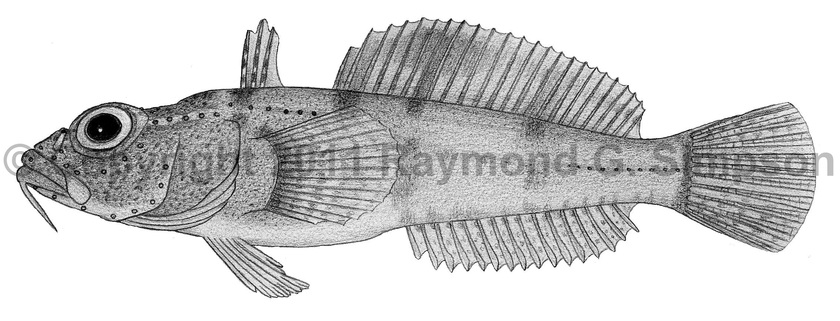
Common Name
South Georgia Plunderfish
Year Described
Lönnberg, 1905
Identification
Dorsal Fin: III, 23-25
Anal Fin: 16-19
Pectoral Fin: 14-18
Pelvic Fin: I, 5
Caudal Fin: 8-11 (branched rays)
Gill Rakers: 13-19 (total in first arch)
Branchiostegal rays: 5
Upper Lateral Line Scales: 6-16 (tubular) + 2 (disc-shaped)
Middle Lateral Line Scale: 6-19 (disc-shaped)
Vertebrae: 33-36
Body elongate, flattened ventrally, with a large head (not much wider than deep). Weak post-temporal ridges. Eyes large. Snout shorter than orbit. Interorbital narrow. Two dorsal fins: one a small spiny fin over pectoral base and the other a long-based fin consisting of rays. Second dorsal fairly high. Anal fin short in height with origin well behind dorsal origin. Pectoral fin large and fan-shaped. Pelvic fin jugular and fairly long. Caudal fin rounded. Mouth reaching middle or orbit; protractile. Jaws with small teeth. No teeth on vomer or palate. Upper opercular edge with a hook-like projection. Body naked. Two lateral lines: one on the upper body ending under the anterior dorsal fin and the other on the lateral midline on the rear body and caudal peduncle. Mental barbel simple in females or with an enlarged tip in males (3.0-5.7 in HL).
Color
Body pale yellowish with 4-6 dark body bands that extend onto the dorsal fin. Bands often break up into blotches on ventral surface. Head with a reticulate pattern of dark markings from snout to pectoral fin base. First two dorsal spines with dark bands. Anal fin dark basally. Pectoral fin spotted basally with 5 dark bands distally. Pelvic fin pale with a few spots basally. Caudal fin with 6 bands, lightening dorsally and ventrally. Barbel light colored.
Size
Maximum size to 11cm TL
Habitat
Inshore and continental shelf from 18-320m (mostly <200m). Bottom dwelling. Feeds mostly on worms and small crustaceans.
Range
Sub-Antarctic Islands: known from South Georgia
References
Eakin, R.R. 1990. Artedidraconidae. p. 332-356. In O. Gon and P.C. Heemstra (eds.) Fishes of the Southern Ocean. J.L.B. Smith Institute of Ichthyology, Grahamstown, South Africa.